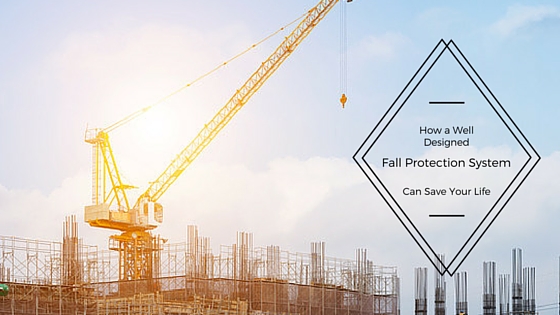
A recent government report stated that six workers fell to their deaths in April 2016. Both US and Canadian regulations demand that employers must minimize fall risk to employees who:
1. Work in elevated areas. This may be as little as four feet
2. Work where there are holes and other openings in floors, roofs or walls
3. Work above dangerous equipment, machinery, or materials
Workplace environments and working conditions are varied and complex, so minimizing fall risk demands more than installing basic fall protection systems. Both OSHA and CSA have published detailed requirements for employers to follow. A well-designed fall protection system minimizes fall risks by incorporating both the overall work environment and the details of each job activity into the design. The design manages fall risk, and it minimizes injury by focusing three primary elements. By incorporating these elements, risk is minimized, and lives are saved.
The Work Environment
Construction, maintenance, and inspection work are done on horizontal, vertical, sloping, fixed or mobile surfaces. The surface, itself, may be smooth, wet, curved or angular, and it may be subject to other dangerous factors such as high wind or flowing water. A well-designed system will take these factors into account.
The Type of Work Done
Well designed fall protection systems can truly protect individuals. The workers may be stationary or mobile, and they may have to operate cumbersome or heavy tools. Workers who use tools on wet, sloping or slippery surfaces, who must pass each other as they work, and who must allow for high winds or unexpected holes need more than the obvious harness, line and anchor point. They must have a comprehensive system that allows for both the environment and the work practices to truly minimize the risk of injury and death.
System Components
A comprehensive system is designed to prevent falls as well as minimize injury should there be one. Components, therefore, include both personal and non-personal elements. Non-personal elements include fixed anchor points, walkways, barriers, gates, toe boards, and covers for skylights and other openings. These may be permanent or temporary, and are intended to prevent a fall.
Personal items include full body harnesses and retractable lifelines. These activate as soon as a worker loses their balance or falls. A harness distributes the force of a fall throughout the body to minimize injury to a particular body part. The retractable lifeline decreases the effect of all the kinetic energy generated by an actual fall and, again reduces injury. The system may also need to facilitate easy and fast retrieval, should someone fall into, for example, a vat of chemicals.
It takes a well-designed fall arrest and fall protection system to save your life. Contact Tritech Fall Protection Systems to learn more about fall arrest and protection, and how our solutions can help you.

Leave a Reply